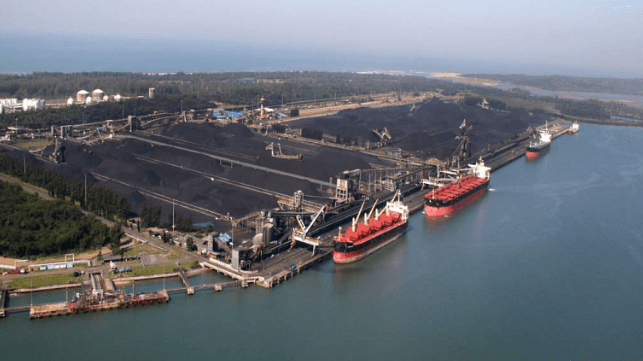SCI-FI-TEK 70 YRS OLD
OPG investigates fusion as future option for Ontario
10 June 2024
Ontario Power Generation has signed a memorandum of understanding with Stellarex Inc to explore the development and deployment of fusion energy in Ontario which will see them work together to identify potential future siting and deployment of a stellarator fusion energy device in the province.
_1.jpg?ext=.jpg) Stellarex Chairman Richard Carty (left) and OPG representative Jason Van Wart (right), sign the MoU watched by Minister Todd Smith (standing) (Image: CNW Group/OPG)
Stellarex Chairman Richard Carty (left) and OPG representative Jason Van Wart (right), sign the MoU watched by Minister Todd Smith (standing) (Image: CNW Group/OPG)Under the memorandum of understanding (MoU), the two partners will also explore establishing a centre of excellence for fusion energy in Ontario.
Fusion energy technology development company Stellarex is a spinout of Princeton University in the USA, dedicated to the near-term realisation of commercial fusion energy production using stellarators. The stellarator approach to fusion energy uses extremely strong electromagnets to generate twisting magnetic fields to confine plamsa and create the right conditions for fusion reactions. Stellarators offer increased plasma stability compared with tokamaks, which use a torus-shaped magnetic chamber to confine the plasma, require less injected power to sustain the plasma, and allow for the burning plasma to be more easily controlled and monitored. However, stellarators are more complex than tokamaks to design and build.
Stellarex has already established supply-chain and fusion ecosystem relationships in Ontario and in the Canadian nuclear sector, and has MoUs with Canadian Nuclear Laboratories, Hatch, and Kinectrics, as well as several academic institutions in the province.
"Ontario Power Generation has watched with interest as fusion-related technology has progressed over the past few years," OPG Senior Vice President, Enterprise Strategy and Energy Markets Kim Lauritsen. "As the technology moves toward commercial implementation, this MOU recognises the role fusion may play as Ontario’s demand for clean energy increases over the next several decades."
“The world is watching Ontario as we build the next generation of reliable, affordable and clean nuclear power, including the first Small Modular Reactor in the G7," Ontario Minister Todd Smith said at the MoU signing, which took place during a tour of the International Thermonuclear Experimental Reactor (ITER) in France. Ontario's well-established supply chain and experienced operators give the province a "nuclear advantage" and making it "the place to be when it comes to the growing fusion-related industry, creating another opportunity for more good-paying jobs in our communities", he added.
OPG is preparing to construct the first of up to four GE Hitachi Nuclear Energy BWRX-300 small modular reactors at its Darlington site. It has already completed early-phase site preparation works, with plans to complete construction of the first unit by end of 2028 for commercial operation by the end of 2029.
In May, Stellarex signed an MoU with Germany's Max Planck Institute for Plasma Physics - home to Wendelsten 7-X the world’s largest stellarator-type fusion device - to partner in specific areas of fusion energy science and technology, including the optimisation of plasma confinement and power/particle control, by leveraging their shared expertise.
In another initiative to explore bringing fusion energy to Ontario, Vancouver-based General Fusion - a private company which aims to build a commercial fusion power plant based on Magnetised Target Fusion technology - signed an MoU in early 2022 to collaborate with Bruce Power and Nuclear Innovation Institute to evaluate the potential deployment of a fusion power plant in Ontario.
Researched and written by World Nuclear News







